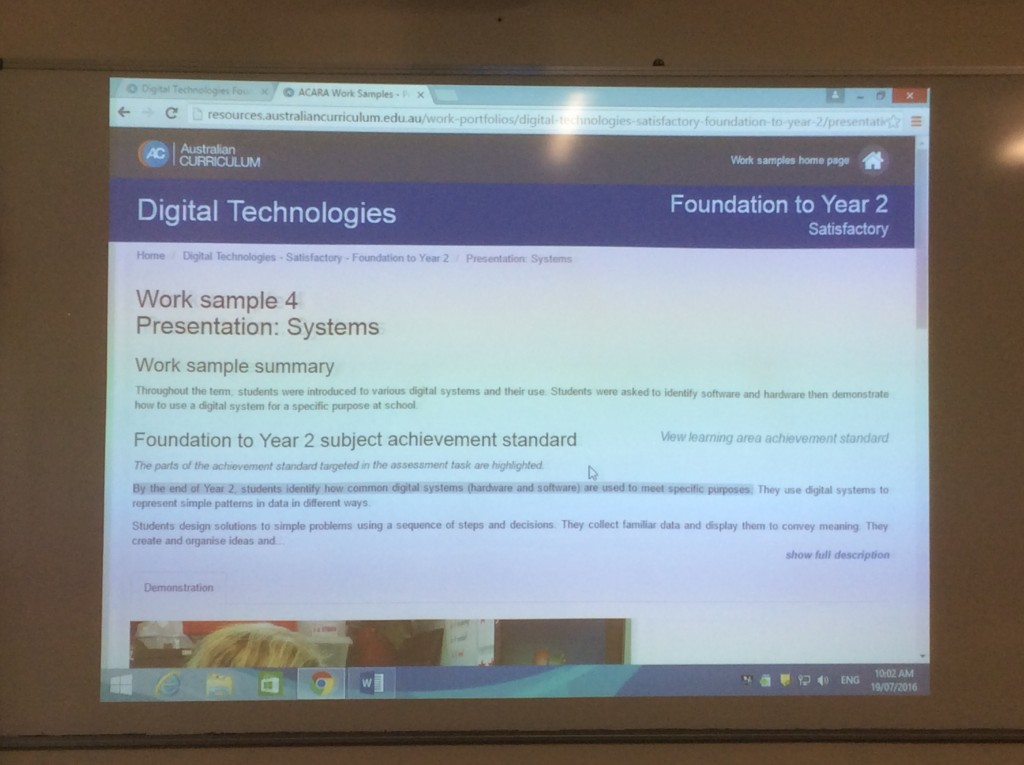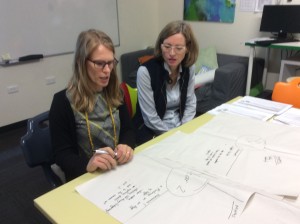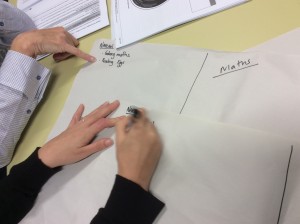As a school and a cluster we are working to map aspects of the Digital Technologies Curriculum with existing curriculum areas.
Yesterday we spent time looking at Prep – Year 2, considering the curriculum and looking at what we were already doing in those year levels. This involved brainstorming our thoughts and getting them onto paper and then applying tweaks so that we were enabling assessing on aspects of the Digital Technologies Curriculum. One of the things that helped us in the beginning stages was looking at the Portfolio examples available on the ACARA site. This helped us to see what was realistic in terms of assessment and standards of achievement. We also had some notes that I had made from ACARA and our QLD C2C resources which included information about using partner subjects, how to preserve the integrity of separate curriculum areas when you approach the design of learning in this way and the important part that project based learning plays in this curriculum – especially in the Years 4-6.
At the same time, we made notes off to the side regarding considerations for other areas….including preparation for Naplan Online. Present at this session, in addition to myself, was our Head of Curriculum – Heather Mercer, our Junior Primary ICT integration specialist – Heather O’Connor and Chantelle Sansness – a Year 5 teacher with expertise in integrating ICT and Digital Technologies.
Upon discovering assessment tasks that we were already doing, we matched these to the Content Descriptors and cut and pasted them beside the task. We then considered additions and modifications in terms of ensuring we would be able to assess Digital Technologies.
Our next task is to start listing other opportunities for addressing areas of the curriculum so we make it clear to our teachers how they can be addressing concepts as part of their everyday teaching. We may create rotational activities that can be easily integrated into learning and work on the explicit vocabulary we are all going to start using consistently across the school.
It was a great day and sets the scene for further work in this area.
As background to our work together, some of the things we spent time discussing included:
Computational Thinking involves integrating strategies such as :
- organising data logically
- defining and communicating a problem, including breaking it down into parts
- isolating key data and representing them, such as through models
- interpreting patterns and models
- designing and implementing a sequence of steps and decisions
Key Concepts of Digital Technologies:
- Abstraction
- Data Collection, data representation and data interpretation
- Specification (descriptions and techniques), algorithms (following and describing) and implementation (translating and programming)
- Digital Systems (hardware, software, and networks and the internet)
- Interactions (people and digital systems, data and processes) and impacts (sustainability and empowerment)
BBC Algorithm – for younger children
Algorithms – Planting a Seed




